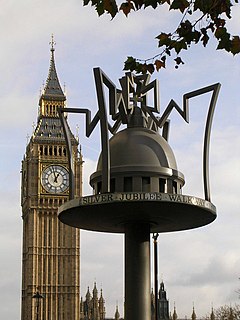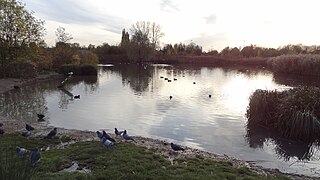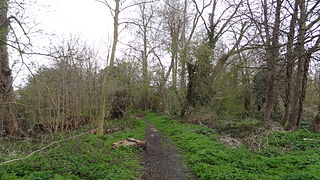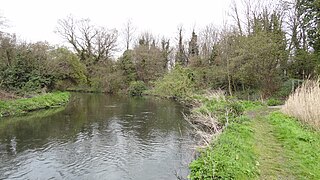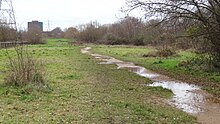
Wandle Meadow Nature Park is a 4.15 hectare local nature reserve and Site of Borough Importance for Nature Conservation, Grade 1, in Wimbledon in the London Borough of Merton. [1] [2] It is owned and managed by Merton Council. [3]
Local nature reserve (LNR) is a designation for nature reserves in Great Britain. The designation has its origin in the recommendations of the Wild Life Conservation Special Committee which established the framework for nature conservation in the United Kingdom and suggested a national suite of protected areas comprising national nature reserves, conservation areas, national parks, geological monuments, local nature reserves and local educational nature reserves.
Site of Nature Conservation Interest (SNCI), Site of Importance for Nature Conservation (SINC) and regionally important geological site (RIGS) are designations used by local authorities in the United Kingdom for sites of substantive local nature conservation and geological value. The Department for Environment, Food and Rural Affairs has recommended the generic term 'Local Site', which is divided into 'Local Wildlife Site' and 'Local Geological Site'.

Wimbledon is a district and town of south-west London, England, 7.1 miles (11.4 km) south-west of the centre of London at Charing Cross, in the London Borough of Merton, south of Wandsworth, north-east of New Malden, north-west of Mitcham, west of Streatham and north of Sutton. Wimbledon had a population of 68,187 in 2011 which includes the electoral wards of Abbey, Dundonald, Hillside, Trinity, Village, Raynes Park and Wimbledon Park.
Contents
A map of 1847 shows the site as Byegrove Mead, which may have been managed as water meadows. In 1877 it was acquired by a sewage company, and it formed part of a sewage works until this closed in 1970. A plan to build a stadium for Wimbledon Football Club on the site was strongly opposed by local residents, and in 1989 it was designated as a nature reserve by Merton Council. [1]
The Meadow lies between the River Wandle and Mead Path, part of the Wandle Trail. Wetland plants and animals include small sweet-grass, eared willow and broad-bodied chaser dragonflies. Bullfinches, whitethroats and reed buntings breed in woodland areas. [4] There are also bodies of water which have a variety of frogs, toads and newts. [5]

The River Wandle is the largest river of the south southwest sector of London, England. Its name is thought to derive from the community around its mouth, Wandsworth. About 9 miles (14 km) long, it passes through the London Boroughs of Croydon, Sutton, Merton, and Wandsworth to join the River Thames on the Tideway. Much of the river is accessible on the Wandle Trail. A short headwater - the Caterham Bourne - is in Surrey, the historic county of the river's catchment.

The Wandle Trail is a 12.5-mile (20 km) walking and cycling trail that follows the River Wandle from Croydon to Wandsworth in south-west London
The Nature Reserve is accessible via Chaucer Way, Boundary Road & North Road in Colliers Wood, a footbridge across the River Wandle from Garfield Road Recreation Ground in South Wimbledon and from a footpath at Plough Lane, Wimbledon. [1]

